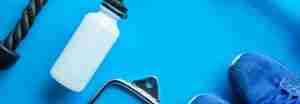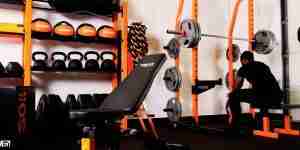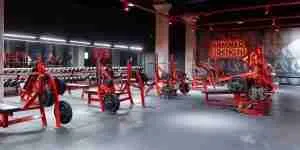
There's a lot of kit in gyms and you've only got so much time for each muscle group. So why not talk about the best back gym machines you can use to get the most out of your visits.
The Only Back Gym Machines That Matter
TLDR: In this guide we focus specifically on gym machines that work your back. These are our picks as the most efficient, or most effective back gym machines to use. Save yourself the time of needless reps on that 8th back machine of the day and stick to the ones that matter only. If you’re looking to kit out a gym or build a back workout plan, this may come in handy too.
Key Takeaways
- This guide will help beginner strength trainers and aspiring bodybuilders discover the value of weight training machines – no matter your experience level
- The aim is to break down some of the stigma of using a machine over free weights and help reduce exposure to injuries
- The guide should help trainers become more efficient with their workout time by identifying how some machines can replace multiple, sometimes unneeded exercise sets.
Quick Answer
Our top all-round pick for the best back machine in the gym for hypertrophy is the chest supported seated row – click to read.
What types of back machines are there?
Most gyms and some hotel gyms (if you’re lucky) house equipment which works your upper and lower back. These include cable machines, seated rows, seated back extension, the lat pulldown, rear delt flye, the pullover and many more. They ostensibly work some or all of the muscles on the back of your body above the glutes.
These machines may be plate loaded, pin selected, cable based and even a merger of a couple of these aspects. Some work unilaterally, eg: one side works independent of the other, while most will work in unison.
Do back machines work?
To understand if back machines in the gym work, you do need to have a frame of reference as to what ‘work’ means.
This could mean:
- Build Muscle
- Help Recovery
- Lose Weight
- Increase Strength
While it must be stated that in tests, machine based strength training saw a lower rate of muscular and strength improvement vs free weights, the results were still positive. In that, using machines to train your back will still elicit a growth and strength training response. So whether you’re looking to build muscle, lose weight by using machines in a circuit or get stronger, you can be confident that their use is not time wasted.
Source: https://www.ncbi.nlm.nih.gov/pmc/articles/PMC7662789/
But why would you use them vs free weights? In short, they offer controlled form, and reduce the risk of injury. For this reason a lot of ex bodybuilders including Jay Cutler and Dorian Yates now swear by the use of machines.
In fact Dorian Yates famously started his back workouts with a Nautilus Pullover Machine to exhaust his lats. He felt that the removal of biceps from the movement enabled him to more effectively target the lats vs a Lat Pulldown which brings in a lot of bicep demand.
So, grab a machine and know that you’re in good company.
What muscles do back machines target well?
With the range of back machines in a gym, you should be able to find something to effectively hit each of the following muscle groups:
- Latissimus Dorsi
- Rhomboids
- Trapezius
- Teres Minor/Major
- Erector Spinae (3 muscles)
- Rear Deltoid
- Biceps
- Rotator Cuff Group
While there are some muscles they target better than others, others are a nice suprise in how effective they can be. For example, I’ve been using the Mirafit narrow grip cable attachment to hit biceps from a pulldown machine, as my primary bicep move lately. It feels amazing and gives me an insane range of motion.
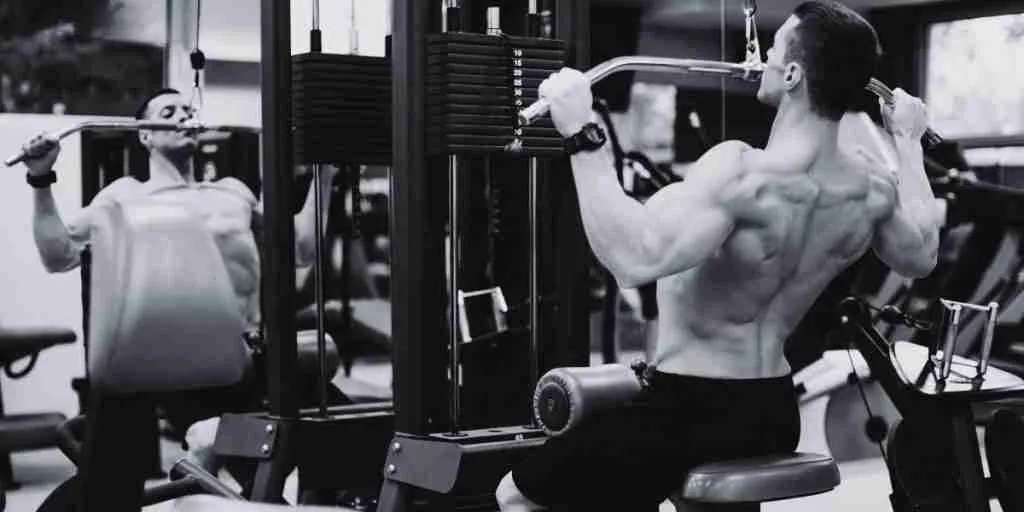
Why you can trust our back machine review
As owners of wide backs…..no don’t worry we aren’t about to use Narcissism in our authority push.
Why can you trust our reviews on these back machines? None of these pieces of kit, brands or models are paying us to promote them. It’s an independent review first and foremost.
But an independent review backed up by Bro-Science is not going to cut the mustard, so we make sure we can evidence any claims we make with actual medical/professional sports studies – not just a link to Reddit.
In addition to these basic editorial rules we follow, we have both been trained as PTs (That’s Lee and I) and our supporting writer who contributes too, Becky, is a current PT. We have a combined 40 years of strength training experience, plus we just are a little nerdy on all this. This is our passion, our hobby – we take it serious. And when it comes to writing guides that we are being judged on, even by our mates at our local gyms, we don’t intend to look stupid.
So, can you trust us yet?
How we picked the best back machines
When it came to picking the best back machines in the gym for this guide we tried to focus on a few core criteria which would mean something to nearly every gym-goer.
- Muscles Worked – Does it isolate or engage multiple muscles
- Availability – While I love the Nautilus Free Rack as a more versatile Smith Machine, it’s pretty rare you’d see it. So we have left off Holy Grails and tried to focus where possible, on common kit.
- Goals Targeted – Is this machine good for a particular aspect of training – eg beginner lifting.
Beyond this we aimed for kit that is safe to use, can potentially replace a barbell (well almost) and/or something we have personally seen results with. There’s no point in us talking about the best back machines in the gym and never having used them myself.
We bundled this all up and then plucked a number from 1 to 10 out of our arses that felt right.
Winners - The Best Gym Machines For Back
In this guide we have tried to pick a good spread of types of retreats and fitness holidays. From sun soaked surf weeks, to yoga in the jungle and much more.
In no particular order, let’s take a look.
1/6 Best Back Machine For Beginners
When you’re first in the gym and you haven’t built the muscle memory or the movement technique needed for free weights, machines offer you a good way to begin building upper body strength and conditioning. The best back machine in the gym for a beginner has to be one that takes out much of the thinking work. This means, the chest supported seat row gets the nod from us.
Chest Supported Seated Row
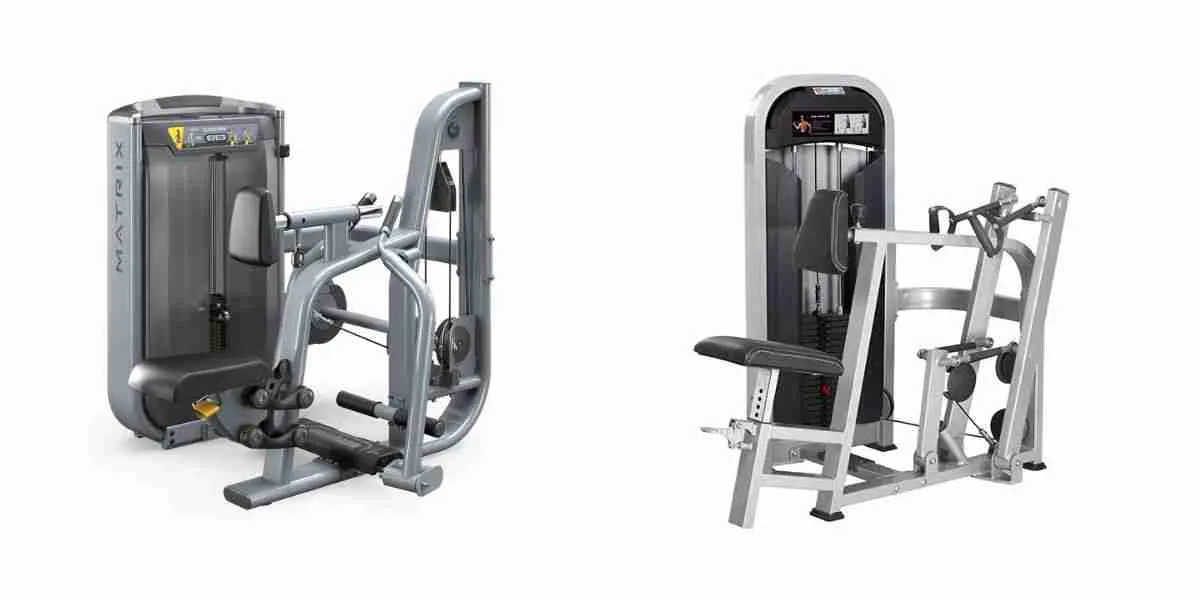
This bit of kit comes in many styles, plate loaded, with a pin selector, high and low, wide and narrow, but at its core, it is a horizontal pull, with a chest pad to avoid cheating. Focusing on strict form by keeping your chest on the pad and squeezing your shoulder blades together to pull, as opposed to your arms, is the movement you perform here.
This back machine removes the need for thinking, eg: is it bar to chest or behind neck, do I lean back etc. All the kind of things that get debated with a lat pulldown machine.
This is simple. Sit on the seat, put your chest on the pad, and squeeze the middle of your back to pull.
For this reason, it isn’t just the best back machine for beginners, variations of this are probably the best back machine in the gym full stop. The biceps, rear delts, traps, rhomboids, and lats all get engaged here. If there is only one machine you could use to suit all needs, I’d find it hard to top a chest supported seated row.
Sure it looks a bit naff, but it feels a lot safer on your lower back than using ‘Bent Over’ or Pendlay rows. In fact in studies it was shown that a seated row variation stimulates all upper body pulling muscles at levels greater than old faithful ‘The Lat Pulldown’.
Source: https://www.ncbi.nlm.nih.gov/pmc/articles/PMC449729/
Muscles Worked:
Rhomboids – Rear Delts – Traps (Primary) | Lats – Forearms – Biceps (Secondary)
Pros:
I’m a big fan of the chest pad as it forces you to think about form. This means one advantage of the chest supported seated row is the ability to ensure proper mechanics through the movement. There’s no thinking involved and the horizontal aspect of this type of machine row means gravity doesn’t help you either.
Cons:
They can be a bit cramped to use in some gyms. Different brands churn out their own format of the machine and at times I have found issues with where to put my feet, or settings leaving you one ‘notch’ away from comfort. Life Fitness has been known to drop a few clangers in some of their versions of this and Technogym has a model that causes your wrists to sit in an odd forward slanting position, but for the most part it’s an edge case.
Ease Of Use:
Easy as sitting down, grabbing the handles and thinking about squeezing your shoulder blades together. No thought required.
Alternatives To Chest Supported Seated Row:
A plate loaded T-Bar row always go down well as a good alternative, so long as it has the chest pad; while a bench supported barbell back row works nicely too. But the latter is both a rarely found bit of kit and a fair degree more advanced. As beginner kit goes for a pull, the chest pad style row is pretty peerless.
Best For:
Those new to upper body training and a machine that helps build middle back thickness, through stimulation of the Rhomboids and Traps.
2/6 Best Back Machine For Width (Lats)
That V-Taper that forms the classic muscular physique is built by developing a width to one’s appearance. We can do this by developing our shoulders and working our lats. Those wings that run up your back. You might think my pick for this should be the lat pulldown, and it is a great machine, but for pure lattismus dorsi focus, the machine pullover wins.
Machine Pullover
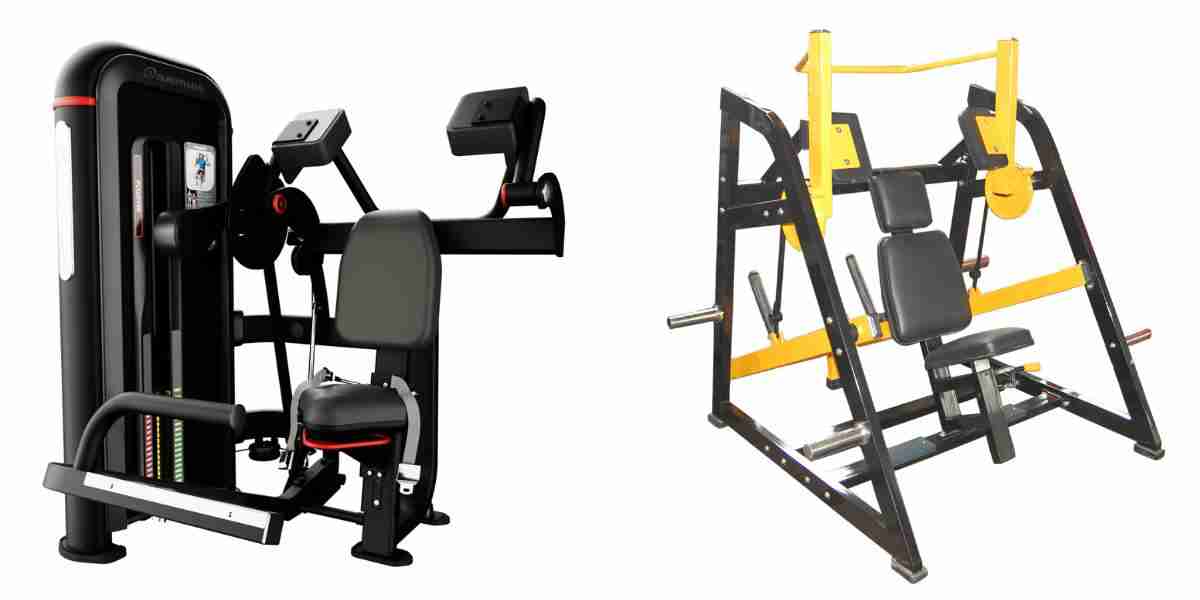
I’ve gone for the machine pullover as my pick for width as contrary to consensus thinking, the Lat Pulldown is not the best bit of kit for Latissimus stimulation and if I’m going to isolate such a large muscle, it’s nice to remove any weak points, namely the biceps. The machine pullover is often neglected by other users so there is a good chance you’re never going to get a queue for it.
You can read more about my passion for the pullover machine in my Nautilus Gym Equipment Review – (If you’ve got nothing else to do)
Muscles Worked:
Latissimus, Serratus (Ribcage Muscles) (Primary) | Teres Major/Minor (Secondary)
Pros:
The machine pullover actually hits quite a few muscles but I’ve always felt that this doesn’t fail on weaker secondaries in the way other machines can cause to happen. It also hits the intercostal/serratus ribcage muscles, which can give a much more chiselled look after a cut and create a less ‘ribby’ appearance.
Cons:
Harder to track down in some gyms.
Ease Of Use:
Like the seated row, it’s not a difficult machine to use and it means it’s harder to perform incorrectly.
Alternatives To Machine Pullover:
If it’s a machine you’re looking for, then you could place a seat in front of a cable column and place either a bar or rope behind the head and recreate the pullover motion. Alternatively you begin to move away from machines and need to consider a dumbbell pullover.
Best For:
Those who want to pre-exhaust their Lats at the start of a workout, or anyone who wants to give width training some added input.
3/6 Best Back Machine For Rhomboids & Traps (Thickness)
The rhomboids are that big triangle muscle mass in the middle of your back. That triangle is capped off with another triangle in the Traps to create the diamond look. This back machine helps focus on this back thickening zone.
Low Cable Pulley

The humble low cable pulley. Great for it’s ability to change attachments (handle) and another option for a horizontal row. The position of the exercises you can perform on this back machine means you can get a solid range of motion in. From slackening of the shoulders to the front, to the scapular retraction when in pull mode. The low cable pulley is built to help you target the middle of your back.
Muscles Worked:
Rhomboids – Rear Delts – Traps (Primary) | Lats – Forearms – Biceps (Secondary)
Pros:
Good range of motion generally. Ability to change attachment handles to find your perfect position. Low grip position seems to engage upper back more than general seated row machines.
Cons:
The weight stack being right at the front can mean having to dismount every time you want to drop weight or raise it during pyramid sets. Some pulleys have a bench too short that leaves you missing the end when you sit back down and want a fuller range of motion position. Biceps or lower back can weaken performance.
Ease Of Use:
Like any machine, the seated cable pulley row is not hard to get the hang of. It can create a little cheating with the absence of a chest support pad and forcing strict form may make some struggle.
Alternatives To Low Cable Pulley Row:
A T-Bar row, or seated row would come in as solid alternatives. In addition, the single arm dumbbell row can match much of the same effects.
Best For:
Those wanting to build their traps and add some thickness to their middle back.
4/6 Best Back Machine For Lower Back (Erectors)
When it comes to training your lower back, you have pretty limited options in terms of back machines to use. Some workout centres have a plate loaded deadlift machine, and others will have a Roman Chair or GHB seat, but for pure lower back isolation the winner goes to the Seated Back Extension.
Seated Back Extension
A machine loved by classic bodybuilding icon Reg Park, the seated back extension is a safe way to train your Erector Spinae muscle group.
Using a machine you are re-creating the same movement as a Good Morning and helping you to build up the often neglected lower back. I have given this machine an overall score of 7 out of 10, just because it’s mot massively versatile for other uses, but for added value to your training goals, this machine is valid.
So many gym goers neglect the perceived less sexy muscle groups, but a strong lower back improves your core aesthetics, completes a physique and makes your more able to complete movements such as deadlifts which have massive benefits. A couple of sets on this badboy at the start of a back day is not time wasted.
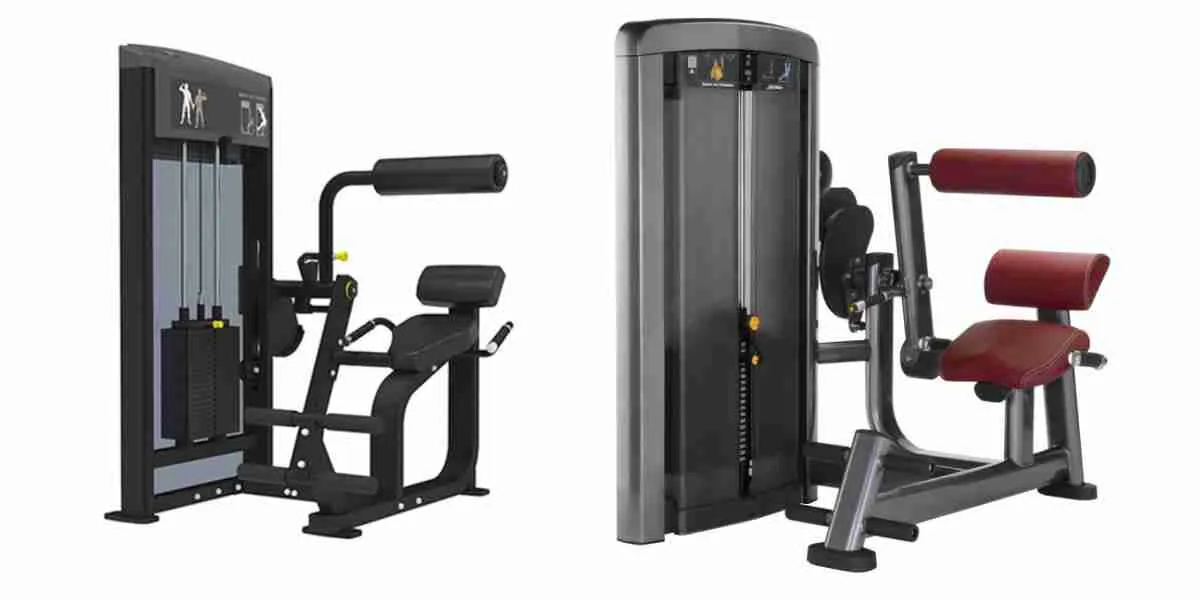
Muscles Worked:
Erector Spinae (Primary) | Glutes (Secondary)
Pros:
An easy way to leverage the benefit of a Romanian Deadlift, with less risk.
Cons:
Can be a bit awkward to use at times, falling off the seat if there are no foot grips or seatbelt. Doesn’t replace the complete posterior chain workout movements
Ease Of Use:
Certainly easier in terms of technique than the non machine options, but if the machine lacks supports or braces to hold you in place, then it can be a bit clunky to use.
Alternatives To Seated Back Extension:
Roman Chair, Glute Ham Back Bench, Plate Loaded Deadlift. These all can replicate much of this movement, each with their own pros and cons. If we are talking about back machine free – then it’s going to be a Deadlift variation or a Good Morning.
Best For:
Those who want to strengthen their lower back, build more ab and core muscle and are chasing the Christmas Tree effect at the base of their spine. These are great for those with aspirations to get better at deadlifting too. Brilliant beginner move.
5/6 Best Back Machine For Rear Delts
Your delts are made up of three heads and then there are the bits underneath them known as the Teres Major and Teres Minor – part of the rotator cuff gang. Training the rear components of this collection, help build a complete upper arm aesthetic, but they also help to strengthen a lot of pulling motions. There are free weights movements to tackle this region, but in terms of primary movements on machines, there is only one winner – the Seated Rear Flye.
Seated Rear Flye
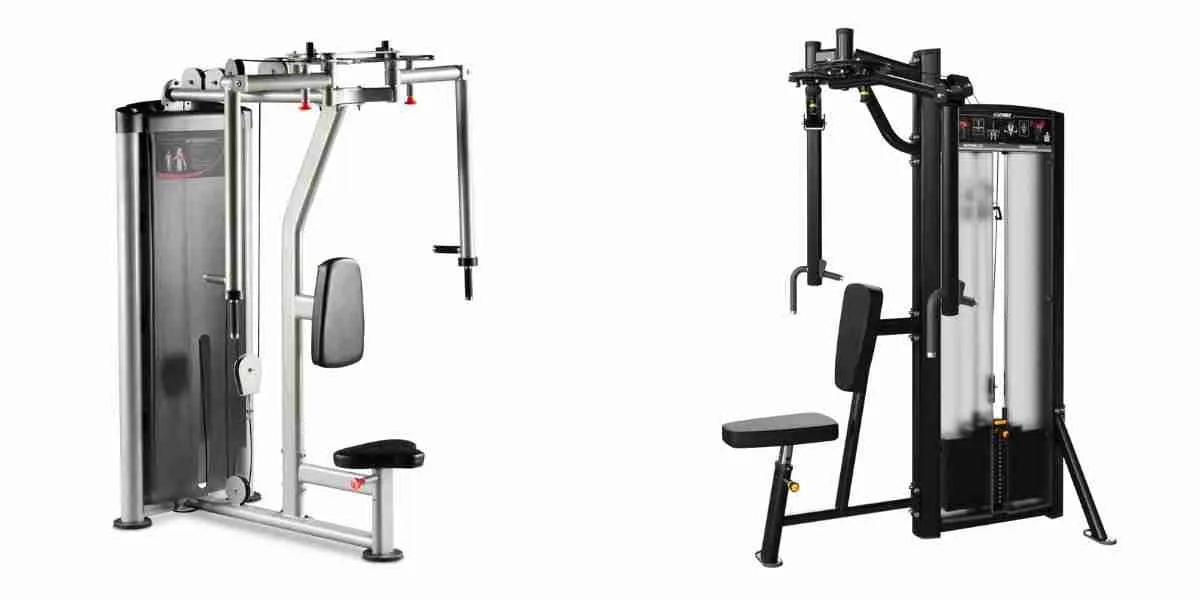
I can keep this sweet, it’s really the only machine for your rear delts beyond using a cable face pull with a long rope, or a rear flye on cable columns.
This machine is tailor made for the top corners of your upper back and nothing really comes close. In fact, this machine is preferred by many over a free weight option. Why? It provides constant tension.
Muscles Worked:
Rear Delts – Teres (Primary) | Rhomboids (Secondary)
Pros:
The constant tension through the eccentric and concentric planes of motion means the rear flye machine stimulates the muscles for longer per rep than a dumbbell free weight version.
Harder to cheat with the fixed chest pad.
Great for shoulder rehabilitation.
Cons:
It’s a bit of chore, you are still working your rear delts in most other back moves and so you have to ask if your workout has the time for isolating such small muscles.
Ease Of Use:
Like all the previous machines, the rear delt flye is simple to work and therefore highly beginner friendly.
Alternatives To Seated Rear Flye:
You can opt for rear cable flye using cable columns, or if you grab longer than usual rope, a face pull with good form can hit the rear delts nicely too. My personal choice is the rope face pull with a real mind muscle focus on the upper back to target that posterior head of the deltoid.
Best For:
Someone looking to rehab a shoulder or has enough time on their hands to start worrying about isolating this muscle. Most gym goers can effectively stimulate the rear deltoid in other compound movements.
6/6 Best Back Machine For All Occasions (Most Versatile)
So what’s the best back machine for all occasions? We are going for the Lat Pulldown machine. Why? It can triple as a straight arm pulldown machine, a bicep pumper, even a tricep day can bring you here. It’s very versatile, so for those thinking about home gym equipment, if you could find the space, then you’d be pretty happy you had one.
Lat Pulldown

Scientists will tell you the Lat Pulldown activates less Lat than a seated row and we can’t argue with that, but it does feel great and it’s a super versatile machine. From underhand, to close grip attachments, there are a range of ways to vary the movement, including as mentioned before, you can use it for your tris too. It’s one of the most used pieces of gym equipment in a fitness centre and it’s not surprising.
Muscles Worked:
Biceps – Rear Delts – Lats (Primary) | Rhomboids – Forearms (Secondary)
Pros:
Great way to build your ability to do pull-ups. Brilliant machine for adapting to target biceps.
Cons:
Requires users to be a little more technique comfortable.
Alternatives To Lat Pulldown:
If it’s about hitting Lats, then the seated row will do a better job, but for that vertical pull strength and development, you could opt for a single arm pulldown on a cable column, or go machine free and hit chin ups.
Best For:
People looking to buy back machines for a home or commercial gym space and have limited resources/budget/area to use.
Need a great back machine workout?
Try this on for size if you’re looking for a Bro Split Back Day that focuses on hypertrophy.
- Seated Back Extensions – 2 x 15-20 | Erector Spinae.
- Machine Pullovers: 3 Sets > 12 – 12 – Fail inc dropping weight to complete fail | Lats – Shoulder Girdle.
- Seated Row (or) Cable Low Row: 3 Sets > 12 – 12 – Fail (as above method) | Traps, Rhomboids, Rear Delts, Biceps, Lats.
- Close Grip Pulldowns: 3 Sets > 12 – 12 – Fail | Biceps, Teres and Lats.
- Shrug Machine + High Cable Face Pulls: 3 Sets > 12 – 12 – Fail | Traps, Rear Delts, Rhomboids. (Superset)
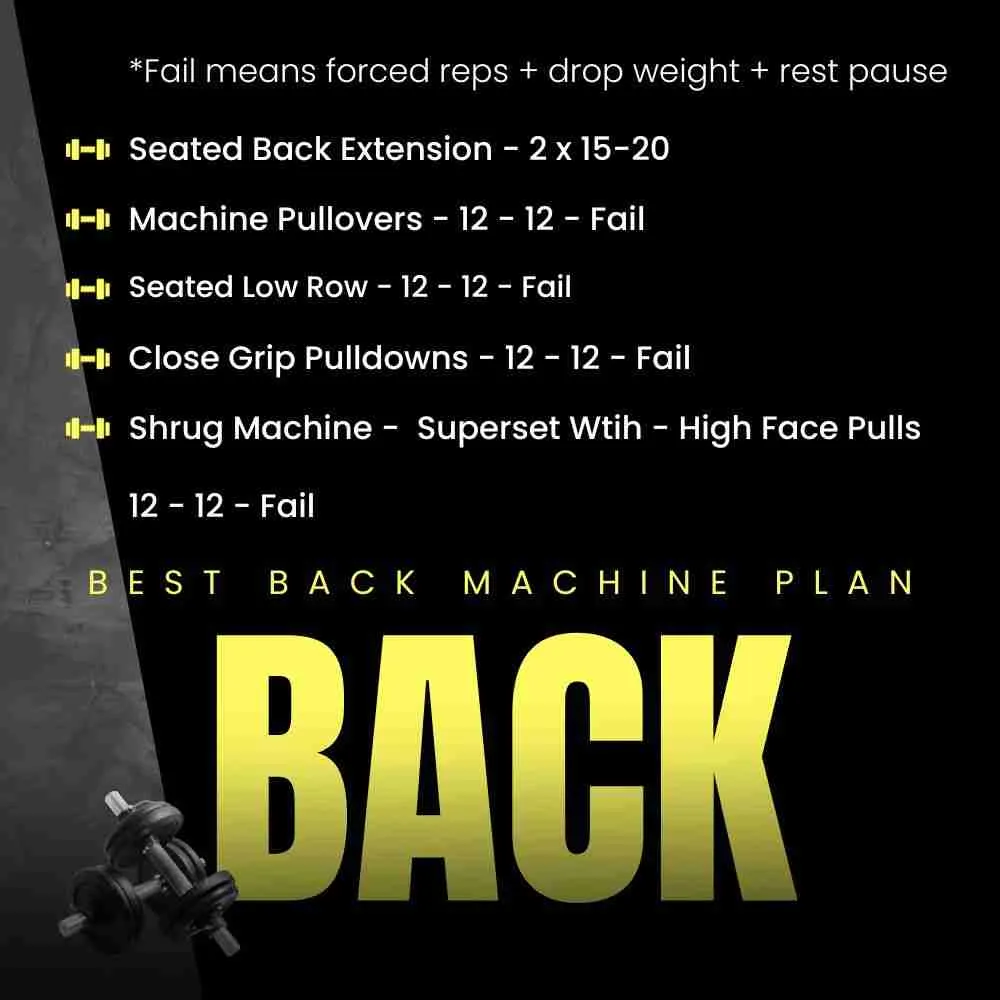
Outro
I hope you’ve found this guide to the best back machines in the gym useful. I’ve had to use them a lot while travelling as there isn’t always the kit you want, in a hotel fitness centre, but I also had to lower my training intensity for a short while this year after some surgery and it taught me a new found love for these often ignored pieces of gym kit. It got me exploring into why that stigma existed and whether they can replace free weights. As the guide shows, an awful lot of professional bodybuilders and peer reviewed studies, seem to suggest they really can.
Next time you’re in the gym – go say hello to the seated chest row and send them my regards.
Your Workout Brand Could Be Here
Think your brand or range of machines should have been used for our article’s photos? Or perhaps there is something exceptional about your back resistance machines that means we should be telling people. If that sounds like you or your company, you should get in touch.
Drop us a message to contact at barbellsabroad.com and tell us what we’re missing.
